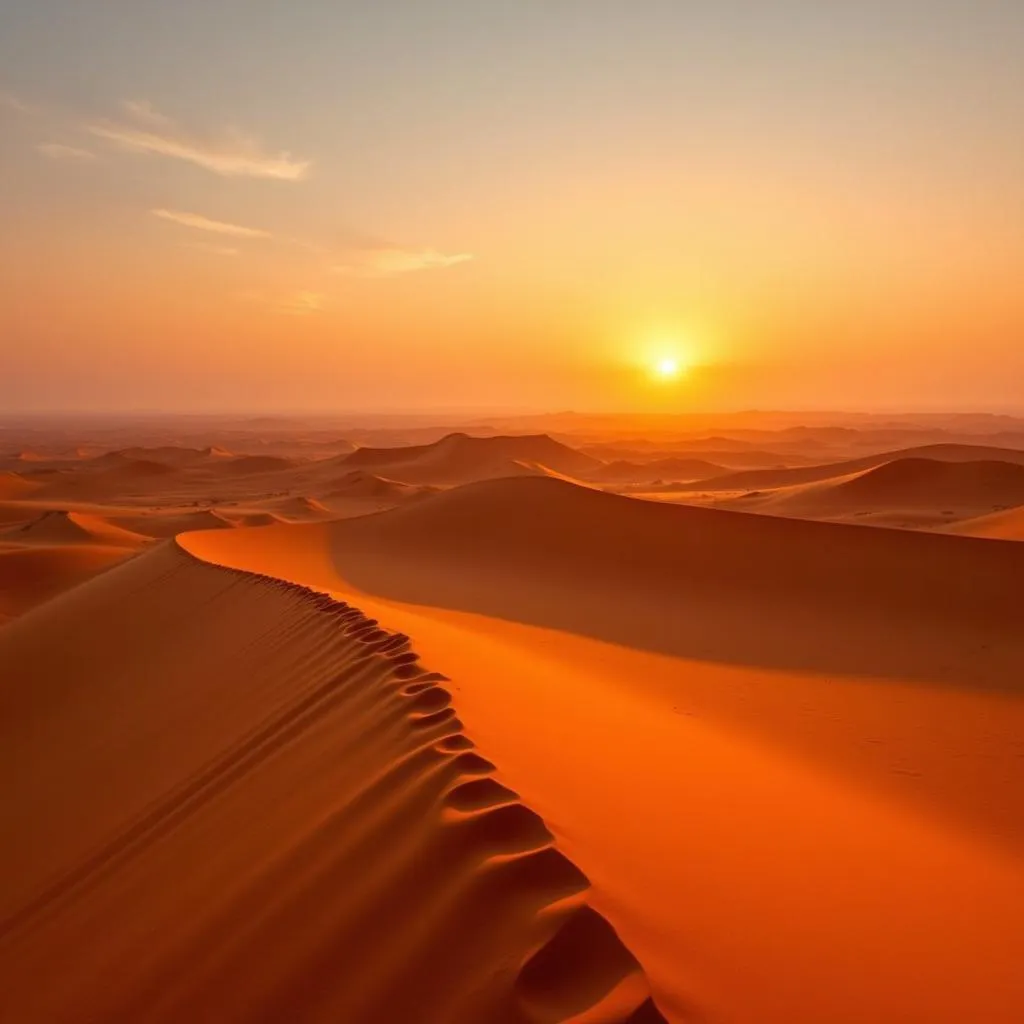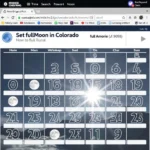The desert, a place of stark beauty and unforgiving conditions, often evokes a singular color in our minds: beige. But what color is the desert, really? The answer, like the landscape itself, is far more nuanced and captivating than you might imagine. While shades of beige, tan, and brown are undoubtedly prevalent, the desert palette extends far beyond these earthy tones.
Unmasking the Monochromatic Myth: It’s Not Just Beige
The desert’s seemingly monochromatic appearance is largely due to the dominance of sand, which itself can vary in color depending on its mineral composition and the angle of the sun. Iron oxide, a common component, can tint the sand in hues of pink, orange, and even red. This explains the breathtaking vistas of places like the Sahara Desert, where dunes glow in fiery shades.
 Sahara Desert Dunes at Sunset
Sahara Desert Dunes at Sunset
But to limit the desert to just these warm tones is to overlook its incredible diversity. The presence of other minerals, like gypsum, can create stunning white sand deserts, such as White Sands National Park in New Mexico.
Beyond the Sand: A Tapestry of Color
Looking beyond the sand reveals a surprising array of colors woven into the desert tapestry. The resilient vegetation, adapted to thrive in this arid environment, contributes its own unique palette. Sagebrush, for example, lends a silvery-green hue, while cacti introduce vibrant greens alongside their iconic spines.
“The desert comes alive with color, especially after a rare rain,” says Dr. Emily Carter, a botanist specializing in desert flora. “The muted tones of the dry season give way to a burst of wildflowers in every imaginable shade.”
These ephemeral blooms, a testament to nature’s resilience, transform the landscape into a canvas of vibrant yellows, purples, pinks, and blues, attracting pollinators and adding another layer of complexity to the desert’s color story.
The Sky’s the Limit: Atmospheric Influences
The desert sky itself plays a dramatic role in shaping our perception of color. The dry air, with its minimal humidity, allows for crystal-clear views and intensifies the colors we see. Sunsets become fiery spectacles, painting the sky in a gradient of oranges, reds, and purples as the sun dips below the horizon.
Moreover, the absence of light pollution in many desert regions makes the night sky an awe-inspiring display of celestial brilliance. The stars shine brighter, revealing a breathtaking spectrum of colors often hidden in more urban settings.
The Desert’s Color Palette: A Continual Evolution
The colors of the desert are not static but rather in a constant state of flux, influenced by the time of day, the season, and even the weather. From the soft hues of dawn to the dramatic shadows cast by the midday sun and the fiery glow of sunset, the desert is a master of chromatic transformation. Understanding this dynamic interplay of factors is key to appreciating the full spectrum of its beauty.

